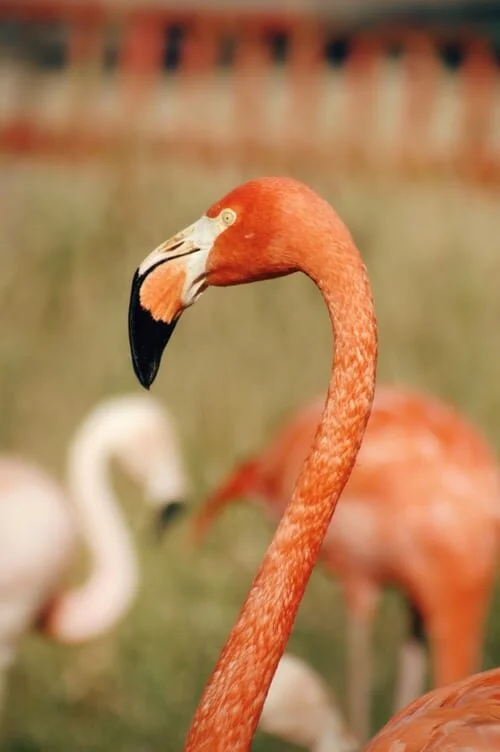Pretty In Pink. One Of The Great Wonders Of The Kalahari Desert.
A gigantic moon rises slowly above the gigantic Makgadikgadi Pan, seemingly held aloft by children with long sticks. This illusion is caused by the branches of long dead trees that line the distant edge of the pan that seems to suspend the celestial body in the fading light of a perfect day.
I am standing on one of the largest salt pans in the world situated in the middle of of the dry savanna of North Eastern Botswana. This vast pan is all that remains of the formerly gigantic Lake Makgadikgadi which once covered an area almost twice the size of Switzerland before it dried up several thousand years ago.
The name Makgadikgadi is derived from the language of the San people as the name for the Kalahari Desert, meaning a dry, thirsty place which, when standing on the crusty, salt infused bed of the pan is more than an apt description.
Lying southeast of the Okavango Delta and completely surrounded by the Kalahari Desert, Makgadikgadi is technically not a single pan, but a series of several pans, the largest being the Sua at approximately 1,900 sq. mi (4,921.0 Sq.km )
The Makgadikgadi is a place haunting beauty which leaves visitors with a profound sense of awe. It’s harsh cruel landscape, coupled with a delicacy and subtlety, that creates a spectacle on a massive scale, which throws my own sense of mortality into stark relief.
The pans are basically a salty desert whose only plant life is a thin layer of blue-green algae however, the fringes of the pan are made up of salt marshes circled by grassland and shrubby savanna.
Very little wildlife exists here during the harsh, dry season when strong, hot winds blow from the north and only salty water exists but, as the Nata River rises gently from its source near Bulawayo in Zimbabwe, it gathers momentum as it meanders south and in doing so creates the seasonal flooding of the pan system.
This stark moonscape all at once then transforms into a series of cerulean pools attracting hundreds of thousands of migrating animals including vast herds of wildebeest, zebra, antelope and of course the mighty predators made up of lion, leopard and cheetah who for the duration of the season revels in the abundance of prey.
But, one of its wonders of the Makgadikgadi Pan is that when the waters rise it lures over a million pink flamingos to the waters rich in food and almost overnight the pan becomes home to one of only two breeding populations of greater flamingoes in Southern Africa.
It is these magnificent creatures that I have come to see.
The word Flamingo comes from the Spanish word, Flamenco perhaps due to the vibrant, pink colour of their plumage. This unusually bright hue in their feathers is caused by the presence of carotenoid pigments found in the algae and crustaceans on which the species feeds.
The inhospitality of the salt pans is actually a blessing for these migratory birds as human intervention has been minimal meaning that the habitat of these pink princesses and princes remains fairly undisturbed.
From the grasslands to the edge of the water is a fair hike over the salty crust that crunches underfoot and is bedecked by white and pink feathers that the birds have shed on their forays onto dry land.
After a few a hundred meters walking onto the pan’s surface, it becomes a rather surreal experience as it feels like one has suddenly landed onto the surface of the moon.
On this particular day, thousands of the birds were about one hundred meters from the waters edge wading, with heads down intent on sifting through the algae to gather their daily nourishment. They were acutely aware of my presence and, even at this distance, several believed that even this was too close and took flight at my approach.
This event in itself is a breathtaking sight as they begin to splash through the water, running on impossibly skinny legs before tucking them into their torsos and take to the air in perfect unison
Flamingos, when on the ground usually stand on one leg while the other is tucked beneath their bodies. The reason for this behaviour is not fully understood. One theory is that standing on one leg allows the birds to conserve more body heat, given that they spend a significant amount of time wading in cold water. However this theory has its flaws as the one-legged behaviour also takes place in warm water and is also observed in birds that do not typically stand in water. An alternative theory is that standing on one leg reduces the energy expenditure for producing muscular effort to stand and balance on one leg.
Whatever the theory put forward by renowned ornithologists it doesn’t really matter when one sees them up close for, standing on one leg or wading contentedly through the shallows on two they present an incredible sight that takes one’s breath away.
Once again I am privileged to witness the magic of an African Sunset as the sun slowly slips behind the horizon in a fiery, red ball. As twilight falls the flamingos wade a little further out into the pan and huddle together for protection against any predator that might see them as easy prey.
It is moments like these that I do feel so incredibly blessed.
Paul v Walters is the best selling author of several novels and when he is not cocooned in sloth and procrastination in his house in Bali he occasionally rises to scribble for a number of international travel and vox pop journals.
Photography copyright Paul v Walters & E.J. Lenahan













